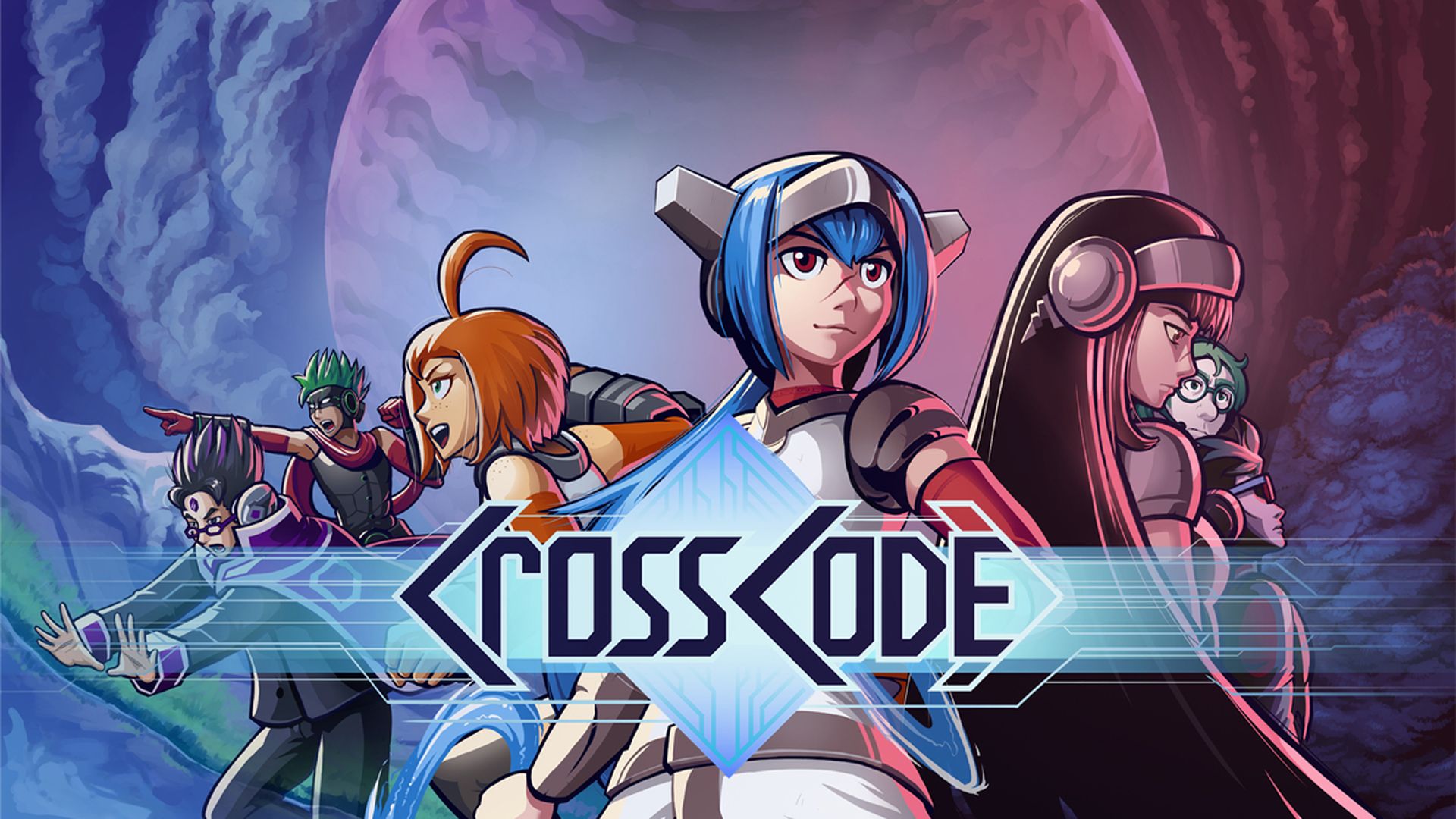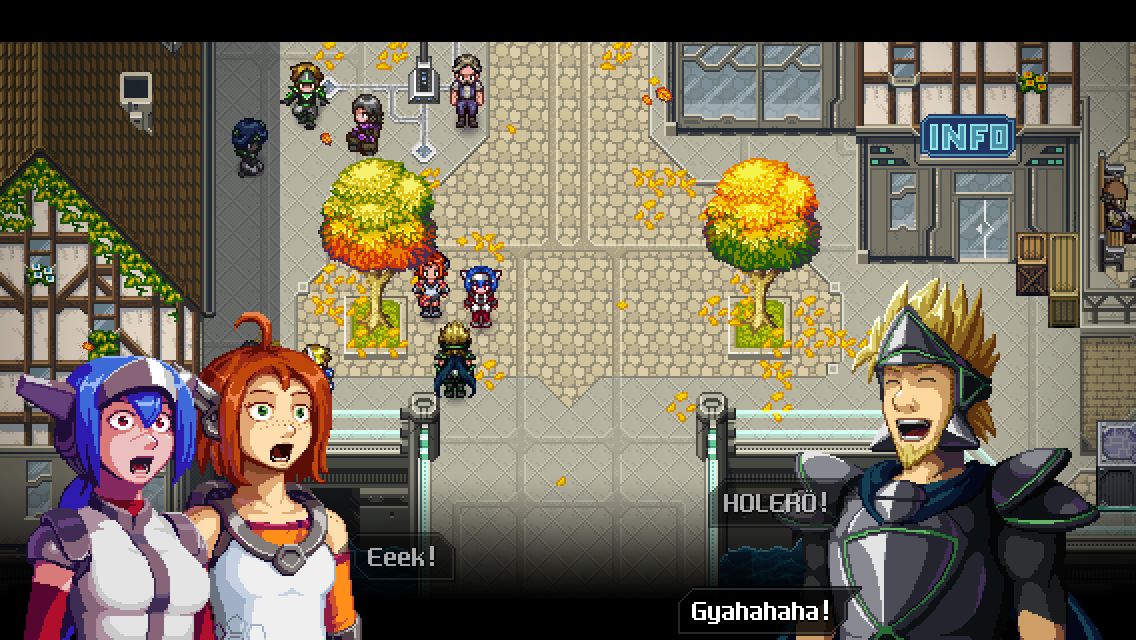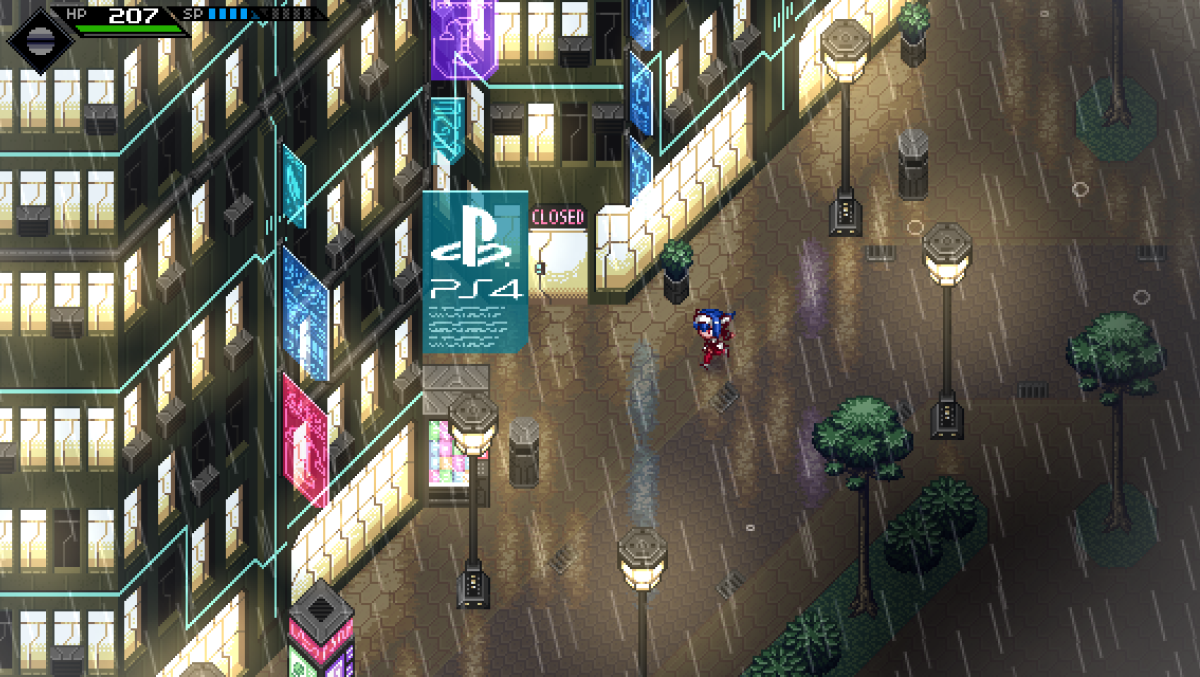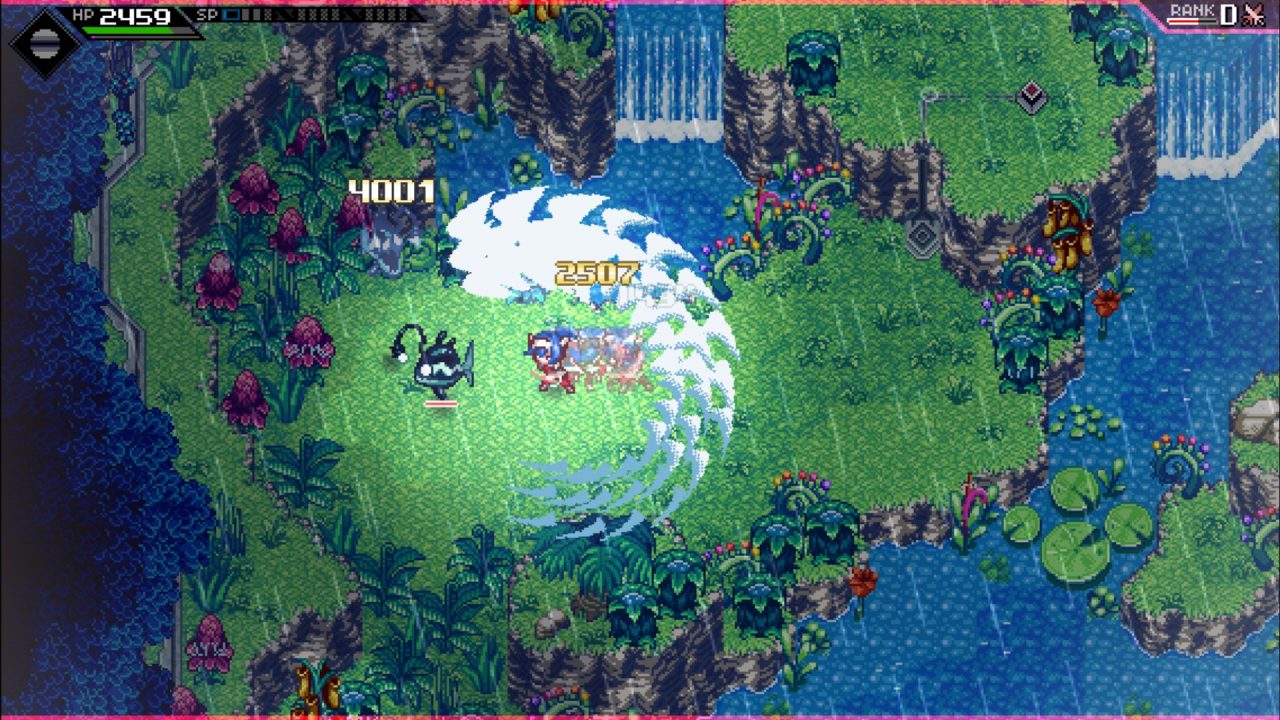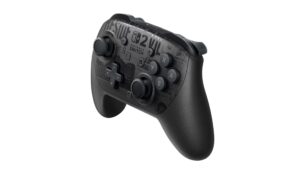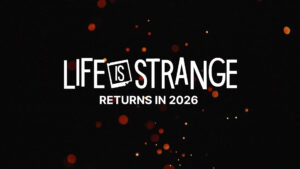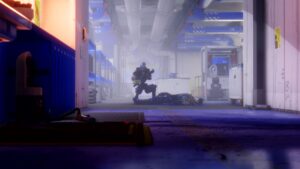
It was the recent Nindies presentation. You know, the one which dated Wargroove (which is now available and well worth playing) along with a bunch of other Chucklefish games. The next game was thus teased: “Want 16-bit SNES-style graphics with butter-smooth physics? A fast-paced combat system? Engaging puzzle mechanics? And a gripping sci-fi story? We’ve got you covered.”
Cue the announcement of Radical Fish Games’ CrossCode for the Nintendo Switch and an overly loud, excited expletive on my part. In a positive way, of course.
When I first picked up CrossCode on Steam Early Access in 2016, I only knew what I read. An action RPG akin to Secret of Mana and Terranigma (both which I hadn’t really played). An homage, a journey back to a more innocent time, which many indie tend to promise. I had traversed the dangerous reaches of Celeste Mountain, attempting to piece together a girl’s broken psyche. The journey of a father and son across numerous Norse realms, the fires of family tested, still remained a notable achievement in story-telling. There were also giant monsters and Elder Dragons who were proudly conquered. For me, CrossCode was an altogether different experience – that of traversing worlds with a close group of friends, laughing, arguing and ultimately uniting for the sake of friendship.
"So the real question is: Why is CrossCode so darn good? What helps it stand above and beyond so many titles, even among its inspirations which remain classics to this day?"
One would think that more contemporary titles would make a game so long in development seem diluted or – at best – old-fashioned at launch. When a developer sticks to a vision like this, it can stand on its own for a long, long time. CrossCode released in September 2018 for PC and is on its way to the Nintendo Switch later this year. So the real question is: Why is CrossCode so darn good? What helps it stand above and beyond so many titles, even among its inspirations which remain classics to this day? If nothing else, what can you expect if – and really, when – you pick up the Switch version?
For all its hype, CrossCode starts out in a typical yet strange fashion. You’re Shizuka, a Spheromancer rushing through what seems to be a traditional Japanese estate to stop her brother, Satoshi, before he passes on. Satoshi is a programmer who’s working on something important – all sense reason has pretty much gone out the window at this point. By the time she finally reaches him, it’s too late. But what happened? What were all those creatures trying to fight Shizuka? What were those powers she just used? Was this set in the future?
That question is, of course, not answered immediately. The perspective then shifts to Lea, an amnesiac Spheromancer who awakens inside the M.S. Solar with the inability to speak. She meets Sergey, someone who with a lot of knowledge about her predicament (and also apparently part of the game’s staff). She’s able to eke out a few words like “Hi” and eventually “Lea”. As it turns out, Lea is logged into CrossWorlds, a game that blends the persistent online environment of an MMO with virtual reality. Of course, Lea’s predicament isn’t that of your average player.
What was life like before logging in? Who is she? Why can’t she speak? Whether playing the game will trigger her memories or not, Lea works with Sergey to eventually discover her identity. Thus the journey begins to CrossCentral, the teleportation hub of the world, and then to the Track of the Ancients to gather the four elements.
"CrossCode nails both world design from a 16-bit action RPG perspective and the perspective of an MMO, becoming a meta-commentary by the simple handling of its premise."
The utter simplicity of the intro doesn’t quite do justice to the layers of intrigue underneath. You get the impression that the people on the M.S. Solar know Lea from before. Also, who was the mysterious avatar that attacked Lea on the ship, especially since the Solar is outside of the main playground? The plot shifts towards Lea actually being a character in the game’s world, playing alongside other people’s avatars and completing dungeons. But story is progressing simultaneously through flashbacks, strange occurrences and whatnot, threatening to overwhelm our hero at a moment’s notice.
To say anything more would be to spoil some of CrossCode‘s best moments. Besides, this a story you’re best left to take in at a comfortable pace, spending time with its characters and ironically forgetting yourself in the world of CrossWorlds. The world design is utterly impeccable in this regard, channeling the 2D aesthetic of old-school role-playing games with seemingly little effort at all. CrossWorlds slowly opens up, introducing you to the simplistic tutorial dungeon before venturing into the first major town, Rookie Harbor.
What’s impressive about CrossCode‘s world design is that, for all intents and purposes, it’s acknowledging and yet leveraging the limitation of NPC conversations. Within the context of a video game, seeing all these characters would make for a more immersive experience. The limitations make sense to us – some NPCs have monotone shades in conversation screens or throwaway/cliche dialogue (like the hard-boiled cop not being impressed by Lea’s designation as a Seeker) – because this isn’t a big-budget MMO. However, when you think about it, this is more or less how things are presented in an MMO. There are throwaway NPC characters who simply exist to dole out quests and whose existences are forgotten the second you move away. Their dialogue and characterization usually is cliched. CrossCode nails both world design from a 16-bit action RPG perspective and the perspective of an MMO, becoming a meta-commentary by the simple handling of its premise.
"The writing of CrossCode does an excellent job of capturing that pseudo-social vibe of an MMO that’s so poorly constructed through many a shared world shooter’s trailer."
Don’t worry though because this is a single-player game and many NPCs, even if they are just quest-givers or bystanders in the world, can make an impression on you (and even remain a mystery till now like Ketin D’Kar). Then there’s the main cast whose characterization succeeds in drawing you further in. It starts with Emilie, a PentaFist who marks herself as Lea’s rival but more in the dungeon-conquering sense. She’s actually just happy to have someone to play with, even if Lea seems like the best listener in the world. The spiky green-haired Apollo makes his presence known soon enough, coming off as your standard MMO elitist that knows everything about the Spheromancer class. Apollo challenges Lea on several occasions to duels because he believes her to be a cheater. Over time – and with the introduction of Joern, who seems endlessly exasperated with his comrade’s shenanigans – Apollo comes across as someone who’s fairly straight-laced and eager to do what’s right. Even if he’s really annoying in the process.
From there, we’re introduced to a whole range of characters from the biology-obsessed Toby “C’tron” Tremblay and the carefree Lukas “Schneider” Fink to the motherly Linda “Hlin” Palmer and the reserved Albert “Beowulf” Grumpesto. Some of these characters will be your party members, fighting alongside you, but they’ll all eventually become Lea’s friends. In true MMO-fashion, you can call upon characters for advice or invite them to your party for some adventuring. They all have lives beyond the game though, whether it’s Emilie’s schoolwork being affected by the game or the camaraderie that Joern and Apollo share in reality.
The communication further reinforces that vibe of traveling with friends. Emilie will make observations about the various enemies you face, from killer bunnies to sentient evil snowmen, while C’tron comments about the flora and fauna of specific places. Schneider is oddly level-headed in serious circumstances while Apollo reveals himself to not be as stuck-up as one might imagine. Allies will call out when knocked down, compliment your escalating performance (when they’re not wondering if you need a break) and generally exclaim enthusiastically.
The writing of CrossCode does an excellent job of capturing that pseudo-social vibe of an MMO that’s so poorly constructed through many a shared world shooter’s trailer. However, its writing and gameplay systems convey the strong bonds between its characters, humanizing them in a universe that feels fake (and questions what it means to be human).
"CrossCode‘s movement is quick and responsive and forms a great basis for its combat."
CrossCode‘s gameplay can be broken up into three fundamentals – parkour, combat and puzzles. The movement in the game is very simple – there is certain terrain that Lea and friends can jump onto if it’s not too high. Navigating through environments and finding the right path to get where you need to go is key and this is woven into the exploration. At times, you’ll receive quests to parkour from a starting point to the finish while hitting the appropriate markers along the way. Secrets can be discovered by scaling up to certain places, slotting into the basic gameplay tenet of rewarding you for your hard work when figuring out the right path (crazy, I know). Parkour also becomes important when exploring the different elemental dungeons and even during boss battles.
CrossCode‘s movement is quick and responsive and forms a great basis for its combat. When playing on keyboard and mouse, it’s possible to string together combos at close range. However, back off a bit and the Left Mouse Button can be used to take aim. Aim properly and you’ll unleash more powerful shots. Fire like mad and it might help to quickly eliminate smaller enemies in close-to-mid range but lacks in damage and accuracy. You can also dash and block attacks, with Perfect Blocks negating all damage. Combine these together and it’s possible to seamlessly hop into battles and wreck shop.
There’s even a Ranking system which incentivizes you to keep beating down foes in consecutive order. The more enemies you defeat at a faster rate, the higher your rating. This rewards more XP and rare crafting materials. There’s a definite risk versus reward though because you heal outside of combat. The longer you stay in combat, the better the rewards but there’s also the risk of dying. Or at the very least, you could find yourself wasting healing items to keep pace.
While there have been complaints about the combat being repetitive in the early going, CrossCode opens up fairly quickly. Firstly, its enemy design breaks up your typical “dash in and beat down” tactics. Some enemies like Hedgehags start spinning up, taking reduced damage and immediately homing in on you (this can be dodged though). Others may continuously run away and attack from range, thus causing you to take aim from a distance. Many enemies have stagger phases. As they glow up red and prepare for a powerful attack, you can stun them for a few seconds with a charged projectile and attack unhindered. Setting your teammates to defensive stances also helps to bait out attacks and follow up with some combos.
"I could go on and on about all the things that make CrossCode great. The different guilds with their own quests and leaders that you’ll return to on and off. The shocking twists. The raid."
And hoo boy, the combos you can pull off. Elements play a key role in CrossCode‘s gameplay. Besides exploiting elemental weaknesses, they can be used to pull off powerful special moves akin to fighting game combos. Have you ever wanted to counter an enemy’s attack and then leap back to fire a searing? How about charging up an electrical storm? Elements are incredibly valuable but they can also cause Elemental Overload with heavier usage. You’re hence motivated to switch back to regular attacks, reduce the Overload build-up and then switch back to continue fighting. Even cooler is the fact that every Element has its own passive and active skills so you could essentially stick to certain Elements for their damage resistance while switching to others for more raw power. With skills for powered dashes and counters, long-range attacks, crowd-control and healing, there’s a ton of variety to be had.
However, Combat isn’t everything in CrossCode. If anything, the toughest challenges come from the puzzles. They combine all of the above aspects – combat, movement, Elements and platforming – into a wide array of baffling situations. Make no mistake – some of the most difficult puzzles I’ve seen in any game lie in wait. Switching Elements midway, manipulating slow-moving projectiles to trigger gates, freezing water to form ice blocks to ricochet off of and melting the same ice blocks to allow projectiles to pass – that only scratches the surface of the nuance in CrossCode. Every “dungeon” has its own unique design, layout and elemental requirements, not to mention multiple levels and hooks. Some dungeons require powering up beacons. Others require redirecting energy. Again, don’t expect them to be easy in any way.
I could go on and on about all the things that make CrossCode great. The different guilds with their own quests and leaders that you’ll return to on and off. The shocking twists. The raid. The character development and resolve of Lea, a protagonist who has such a limited speech and yet still fights to convey her emotions. The commentary on MMOs and themes of human rights and understanding. The mystery accompanying the excellently paced narrative that constantly engages you. The massive amount of side content that isn’t repetitive or mandatory to complete but can offer great gear for free. A range of powerful loot that opens up after all the dungeons are complete and which can be acquired by making previous areas tougher.
"If nothing else, CrossCode proves that a game made with this much love and effort can resonate with its player-base, becoming a modern classic in the process."
The only thing that I could see people taking issue with is CrossCode‘s art-style. Though I loved it and every bit of detail that went into it, I could see it not gelling with everyone. That being said, the soundtrack is simply excellent at capturing that 16-bit era, SNES-style of retro nostalgia while still being contemporary. It’s incredible to think that all of this was put together in HTML5 or that it’s available at such a low price. And there’s more on the way. A Boss Rush mode, Arena and New Game Plus along with a post-game story episode are all in development. Additional quests have also been added with The Last Minute Heroes Guild having recently opened up.
Even without all those extensive updates, CrossCode stands firm in so many different ways. It’s a compelling story told well with memorable characters. It’s a retro tour de force in terms of visual and musical production. It’s an easy-to-get-into, tough-to-master action RPG with stellar combat and heaps of customization. It pays homage to the genre’s greats like Terranigma while doing its own thing (and doing it very, very well). If you’re on the fence about CrossCode, it’s well worth checking out on PC and when it inevitably comes to Switch. You simply won’t find an overhead Secret of Mana-esque action RPG of this quality for a long time. The memories of those journeys and the revelations discovered together still stand out after all this time. If nothing else, CrossCode proves that a game made with this much love and effort can resonate with its player-base, becoming a modern classic in the process.
Note: The views expressed in this article are those of the author and do not necessarily represent the views of, and should not be attributed to, GamingBolt as an organization.








